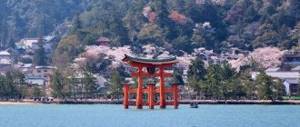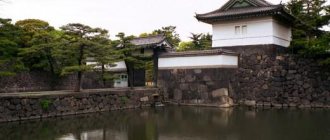As you get to know Japanese culture and the Japanese language, you will often come across the expression いただきます. Literally it is translated as “I humbly accept,” but when it is pronounced at the table, it rather means “let’s eat!” or “bon appetit!” However, some, translating this phrase literally, liken it to prayer before eating, an expression of gratitude to God for sending food.
Meanwhile, the expression いただきます is used not only at the table, it has many more areas of application than you might think. The expression いただきます has its roots in history, and saying it before eating is a relatively new custom in Japan. Get ready to dig deeper. You will learn the history, rules of use, meaning and philosophy behind the phrase いただきます
People say いただきます before receiving something, and if you look in the dictionary, you will see that this verb is basically translated as “to receive”, “to accept”, “to take.” This explains why this phrase is said before eating. After all, you “get” the food. The verb いただきます (and its dictionary form 頂く(いただく, itadaku) have their roots in Buddhism, which teaches respect for all living things. This thinking extends to food, in the form of gratitude to plants, animals, farmers, hunters, cooks and everything that has been related to this food
The verb いただく can be written in two ways:
- 頂く(いただく)
- 戴く(いただく)
Both spellings are correct, but the character 頂 is more common.
By the way, in our online school a lot of time is devoted to studying hieroglyphs. If you dream of understanding the Japanese writing system, welcome to join us!
Knowing the meaning of the expression いただきます is one thing, but it is also important to learn its correct pronunciation and remember the times when it is appropriate to use it.
いただきます correctly at the table
Saying いただきます before eating is an important part of Japanese etiquette, so you need to learn how to do it correctly. Usually everyone says this phrase at the same time, but if you say いただきます separately from each other, it will also be considered appropriate.
Pronouncing the phrase いただきます is accompanied by a number of simple actions:
- Put your hands together
- Say いただきます!
- Make a small bow
- Grab your chopsticks and start eating.
A little history
Itadakimasu and Gochisousama are Japanese rules of etiquette. They come from the Buddhist past of the land of the rising sun.
The fact is that in Buddhism there are two prayers of gratitude - before eating and after. Before eating, they thank those who prepared the food or who are serving the meal, as well as the products themselves from which the food was prepared. After the meal, gratitude must be expressed to everyone who in one way or another participated in bringing this food to the table.
How do people say hello in Japan?
In Japan, people greet each other with a bow. It can range from a slight tilt of the head to a deep arch of the back. According to Japanese etiquette, a deeper and longer bow indicates respect. A small nod of the head, on the contrary, is informal. If the greeting takes place on the tatami, then you need to kneel to bow. Bowing in Japan is also used to thank, apologize, make a request, or ask someone for a favor. Most Japanese do not expect foreigners to be familiar with the finer points of bowing etiquette, so a head nod will suffice in most cases.
In shops and restaurants, customers are usually greeted with the Japanese greeting "Irasshaimase". The client is not required to respond, although those who wish to reciprocate the greeting may nod their heads.
Itadakimasu! (Itadakimas!)
“Itadakimas” does not just mean a wish for a bon appetit. She expresses deep gratitude to everyone involved - most of all, our Mother Earth.
The literal translation of this phrase from Japanese means “I humbly accept it.” It is addressed to those who prepare food. That is, for farmers, fishermen, sellers, etc. And also for the one who prepared the food. Not to mention, it is a thank you to those who sacrificed themselves to become food itself - animals, plants and whatever else will soon end up in a person's stomach.
The difference here from religious gratitude is that with this phrase you thank not only God, who created all the food for us, but also everything that is on the dinner table.
The ancient Japanese art of food gratitude involves giving thanks to someone who died for you to give you food to live.
The phrase is said immediately at the table before eating. Some also clasp their hands together, sometimes holding chopsticks with their thumbs, with their eyes closed.
Learn to be grateful to the Earth, which produces crops, water, grains, trees, animals; and those people who work in the fields, deliver food to the shelves in stores, who cook your food.
Japanese table etiquette
Seating at the table
Some restaurants in Japan have low tables and cushions instead of chairs on tatami floors. Shoes and slippers must be removed before entering the tatami. Remember an important rule of Japanese etiquette: do not sit on other people's pillows!
Eating
Most Japanese restaurants provide wet towels (oshibori) to wash your hands before eating. After placing an order, it is customary to wait until all the dishes are brought and only then begin the meal with the phrase “itadakimasu” (“I gratefully receive”). If the first course is not eaten immediately and the other part of the order has not yet been served, the phrases "osaki ni dzo" ("please continue") and "osaki ni itadakimasu" are used.
When eating food from small bowls, you should bring it close to your mouth while eating. When eating from a shared dish, it is polite to use opposite ends of your chopsticks or serving chopsticks to move the food. According to Japanese etiquette, you should not blow your nose, burp or slurp at the table - these are signs of bad taste.
After finishing a meal, it is recommended to return all utensils to their original condition. This includes replacing the caps, putting the sticks back into the stand or holder. According to the rules of Japanese etiquette, the meal ends with the phrase “gochissama deshita” (“thank you for the holiday”). It includes gratitude not only to the cook, but also to the ingredients consumed.
Alcohol consumption
Don't start drinking until everyone at the table has a drink and their glasses have been raised for the first toast, usually called "Kampai". When drinking alcoholic beverages in Japan, it is customary to pour for each other, not for yourself. Check your friends' glasses periodically and refill their drinks if they become empty. If you don't drink alcohol, just say so and ask for other drinks.
Food sticks
Wooden chopsticks (hashi) are used as cutlery in Japan.
Here are the most important Japanese etiquette rules to remember when dining with chopsticks:
- keep the chopsticks towards the end rather than towards the middle or first third;
- when you are not using chopsticks or have already finished your meal, place them in front of you;
- important: do not insert chopsticks into food, especially rice! This ritual is performed only at funerals, when a dish of rice is placed on the altar;
- do not dig into food with chopsticks;
- You cannot point with chopsticks;
- do not wave chopsticks in the air or play with them;
- Do not move plates or bowls with chopsticks;
- if you have already eaten with chopsticks, use the opposite end to take food from a shared plate;
- knives and forks are used only for Western cuisine; Spoons, however, can be used with some Japanese dishes, such as donburi rice or Japanese curry. A Chinese style ceramic spoon is sometimes used for soups.
Dinner at the restaurant
Many restaurants in Japan display plastic or wax replicas of their dishes in a display case near the entrance. These cues serve to attract customers and inform the restaurant's menu. Typically, they display the exact type of dish and price. Such displays are especially useful for foreign tourists who cannot read or speak Japanese.
Smoking is allowed in many restaurants in Japan. Some establishments have sections for smokers (kitsuen) and non-smokers (kinen). If there is a choice, the waitress at the entrance will ask you about your preferences before seating you at the table.
Upon landing, each visitor in Japan is usually given a free glass of water or tea. Each guest will also receive a wet towel (oshibori), which is used to wash their hands before eating. If the chopsticks have not yet been served, they can be found in a box on the table.
Many restaurants provide illustrated menus, but others may only have text menus in Japanese. If you're unsure about ordering, try asking for recommendations (osusume) or the chef's choice (omakase). Choosing the latter often turns out to be a surprisingly tasty, but very expensive dish. When you are ready to order, signal the staff by saying "sumimasen" (sorry) or (if available) press the call button on the table.
In most restaurants, the bill is paid at the cash register near the exit, since it is not customary to pay at the table in Japan. Cash payment is most common, although more and more Japanese restaurants accept credit cards. In Japan it is not customary to tip. Using your knowledge of Japanese etiquette, simply say “gochisosama deshita” (“thank you for the food”) when you leave.
Gochisousama! (Gochisosama!)
Gochisousama is a phrase used after finishing a meal. Can be literally translated as "It was a lot of work (cooking)." Thus, it would be fair to interpret from Japanese as "Thank you for the food, it was a holiday." Again, appreciation goes out to everyone involved in the preparation of the meal.
This phrase is connected with the fact that in the old days the owner of the house had to work hard to get food for the table. Therefore, it was customary to value this work. And sincerely thank you for the treat. Therefore, "Gochisosama" is translated as "Thank you for the food."
In cafes and restaurants, this gratitude after a meal is expressed to everyone - cooks, waiters and even those workers who stand at the entrance to the establishment.
Rules of conduct in the premises
Many indoor rules in Japan revolve around footwear. The traditions of Japanese etiquette stipulate a clear line between indoor and outdoor shoes. These rules apply not only to most Japanese homes, but also to many traditional ryokans, some restaurants, and the interiors of many temples, castles, and other historical buildings in Japan.
Genkan
In Japanese houses and apartments, there is traditionally such a zone as genkan. It is located at the front door and is a combination of a porch and a hallway. Even though genkan is indoors, it is considered an outdoor zone. It serves as a place where people can change their shoes before entering the main part of the residence. Genkan is usually located at a level below the main floor and differs from it in the type of covering. Be careful not to step on the genkan after removing your shoes. Once removed, it is recommended to turn the shoes so that they point towards the door.
In Japan, it is advisable for tourists to wear shoes that can be easily removed, as you may be forced to take your shoes off several times a day. Also, make sure your socks are clean, neat, and free of holes. In rainy weather, wet umbrellas and raincoats are left outside or at the entrance or placed in plastic bags so as not to wet the floor.
Slippers are provided by the owner of the house. If you don't wear socks, it's polite to have a fresh pair with you and put them on after removing your outdoor shoes. Slippers can generally be worn throughout the room, except in rooms with tatami floors. You should only walk on the tatami in socks or barefoot. Remove your slippers before stepping on the tatami and place them carefully outside the tatami room.
In Japan, separate slippers are often provided for use in restrooms. Regular slippers are left outside the door when using the toilet. Don't forget to take off your toilet slippers after using the toilet.
Our days
Although these phrases are still very popular in Japanese culture, "Itadakimasu" and "Gochisosama" are gradually disappearing among the Japanese. The reason may be people who no longer see the need for it when everything happens so easily. Food is available in such quantity and variety that we don't have to worry about where we get everything from. But what is important is not physical presence at the table or the correct reading of these Japanese phrases. The main thing is a feeling of gratitude that we should all remember!
Present
Gift giving is a big part of Japanese culture. Different types of gifts are given on different occasions. Much attention is paid to beautiful packaging. Four things are not usually given as gifts because it is considered an unlucky number (in Japanese, "four" is pronounced the same as the word for "death"). When giving a gift, both the giver and the recipient use both hands - this is important from the point of view of Japanese etiquette! Omiyagi are souvenirs brought from a trip to their homeland. And temiyage are thank you gifts that you give when you visit someone. Tourists in Japan tend to buy a lot of souvenirs for their friends, relatives and colleagues. There are many souvenir shops specializing in local products in tourist areas and airports. When foreigners come to visit locals, they do not have to bring gifts. But it is a nice gesture that is highly appreciated by the Japanese. We recommend giving food, drinks or other products specific to your country or region. The gift should be neither cheap nor too expensive (usually between 1000 and 5000 yen). Please note that there are restrictions on importing certain types of food into Japan.
Features of the Japanese greeting
Japanese etiquette
greetings are based on bowing. You just need to bow in a special way. Otherwise, the desire to demonstrate good manners can deeply offend a person. The attitude towards a person depends on the duration and depth of the bow. So, when you see the emperor, you should bow by bending at least 70 degrees. You need to greet your boss with a 45-degree bow, work colleagues and business partners with a 30-degree bow, and when you see a friend, just nod. Accordingly, the higher the status of the interlocutor, the lower the bow should be. It is worth noting that tourists are not required to bow when they see waiters, taxi drivers, salespeople, and hotel staff, since they pay for the services they provide. But when meeting a Japanese acquaintance or a person holding an important rank, you should bow.
However, the Japanese are very lenient towards visitors, so they do not require deep knowledge of bowing etiquette from foreigners. It will be enough just to bend at the waist. But the Japanese are very demanding of the indigenous people. Surprisingly, Japanese citizens respect traditions so much that they bow even while talking on the phone!
Attitude towards smoking
The Japanese became addicted to smoking in the 17th century. It was then that tobacco from Portugal first arrived on the Japanese islands. Today there are plenty of smokers in the country.
Surprisingly, in Japan, a woman smoking with a child is far from a disaster. They don't pay attention to this. Although in recent years the Japanese authorities have begun to take appropriate measures to protect the interests of passive smokers. For example, in the central areas of Tokyo there is a smoking ban. Fines for smoking in unauthorized areas reach 2,000 yen (about $20). Similar requirements also apply to airports and railway stations. In order not to disturb others, you can indulge in this activity only in specially designated places. They are usually boxes containing ashtrays and hoods. Local restaurants also have special rooms for smokers.
Japan is one of the most unusual countries in the world with complex etiquette that is incomprehensible to Europeans. We can talk about the culture of the state endlessly. But when going there, it is important to remember that the rules of etiquette in Japan
written not only for indigenous residents, but also for guests who want to get a lot of impressions and feel the real spirit of the country.
Etiquette for visiting tourist places in Japan
Photographing indoors
Policies regarding indoor photography at tourist destinations vary from location to location. Most temples and shrines prohibit taking photos in the worship halls. When it comes to museums and historical buildings in Japan, policies vary greatly. Some allow photography, while others prohibit photography with flash or at all. There may also be a ban on the use of tripods and monopods. Look for signs and ask staff if in doubt.
Visiting a temple in Japan
Show your respect for Japanese traditions by saying a short prayer in front of a sacred object, or tossing a coin into the offering box.
In some temples in Japan, visitors burn incense (osenko) in large incense burners. Buy a bundle of incense, light it, let it burn for a few seconds, and then extinguish the flame by waving your hand rather than blowing it out. Finally, place the incense in the smoking room and hold some of the smoke towards you. The smoke is believed to have healing powers. When entering a temple building, according to Japanese etiquette and culture, you need to take off your shoes. Leave your shoes on the shelf by the entrance. Wear clean socks and remove hats.
How to visit a tomb in Japan
When visiting the tomb, you should behave calmly and respectfully. According to Japanese tradition, you should not visit a shrine if you are sick, have an open wound, or are grieving.
At the fountain near the entrance to the tomb, take one of the provided ladles, fill it with fresh water and rinse both hands. Then transfer some water to your hands, rinse your mouth and spit out the water near the fountain. You should not drink water directly from the scoop or swallow it. Japanese etiquette prohibits pouring water from the ladle back into the fountain.
Japanese baths
The main purpose of taking a bath, in addition to cleansing the body, is to relax after a hard day. The bathroom in a typical Japanese home consists of two parts: a hallway with a sink (in which you undress) and the bathroom itself with a shower and a deep bathtub. The toilet is usually located in a completely separate room.
Taking a bath in a Japanese home is very similar to bathing in an onsen (hot spring) or sento (public bath). When bathing in Japanese style, first rinse the body next to the bath using a shower or washbasin. Only after this can you go into the bath. The water is usually relatively hot (between 40 and 43 degrees). Modern bathtubs can be programmed to automatically fill with water at a given temperature at a given time or heat water to a preferred temperature
Nonverbal language
Looking closely into the eyes of your interlocutor. National etiquette features of Japan.
not welcome. It is for this reason that meeting a Japanese person who is not shy about making eye contact is very rare. Don’t be surprised or take your interlocutor’s constant aversion of gaze as a sign of secrecy.
The origins of this tradition go far back. It was considered indecent to look into the eyes of a person who occupied a higher position in society.
Now eye contact in this country is a sign of aggression. For example, Japanese parents, instead of instructive lectures, prefer to look into the eyes of their children for a long time. Such a ritual is considered a kind of challenge.










